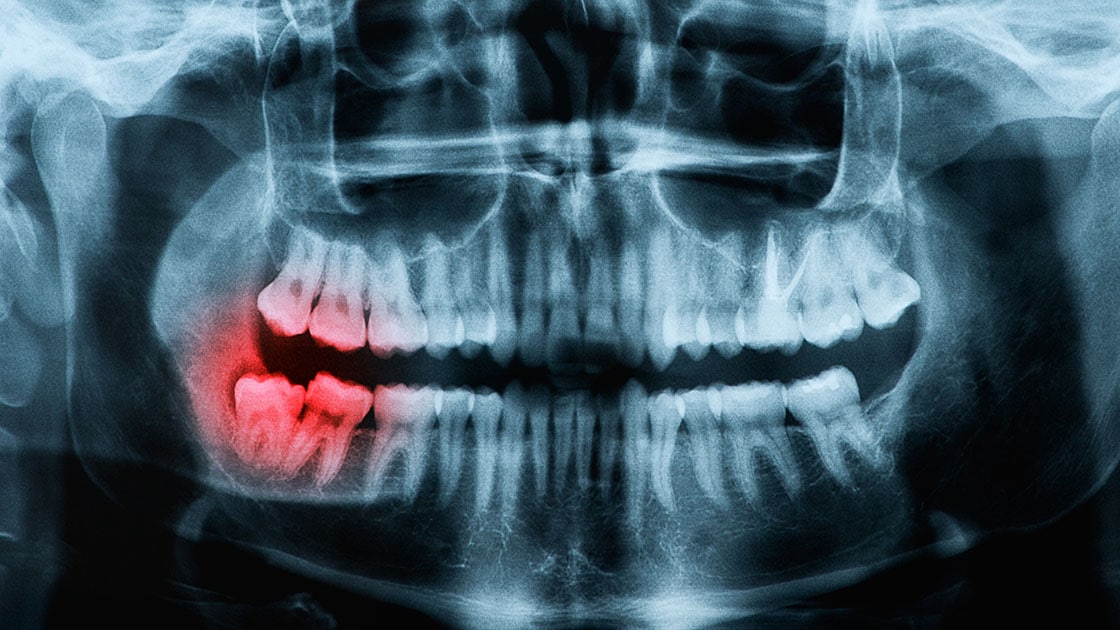
Bronxville Family Dental provides oral surgery procedures in Bronxville, NY. Call 914-337-8430 to learn more and schedule an appointment.
Dental Implants

Wisdom Tooth Removal (3rd Molars)

A wisdom tooth that is deemed problematic is normally extracted to avoid any oral complications. To have a wisdom tooth removed, a small incision is made to open up the gum tissue over the tooth and remove any bone that is covering the tooth. Once the tooth is in view, it is grasped with a dental instrument, known as a forcep, and gently rocked back and forth to loosen it from the jaw bone and surrounding ligaments. Sometimes the tooth may need to be cut into smaller pieces to make it easier for removal. Stitches may be necessary after the removal of a wisdom tooth.
Impacted Tooth & Tooth Exposure

An impacted tooth is a tooth that fails to fully pass through the gums.
Impacted wisdom and cuspid (or canine) teeth are fairly common. To correct impacted teeth, there are a few treatment options. For impacted wisdom teeth, the most common procedure is extraction. For impacted canine teeth, several treatment modalities are available. Orthodontics (braces) can be used to open space for proper eruption. Primary (baby) teeth can either be extracted or surgically exposed to allow for the placement of an orthodontic bracket to help align the teeth.
Bone Grafting

Bone grafting is the replacement or enhancement of bone around teeth. When a tooth is lost, the surrounding bone collapses. Bone grafting is performed to reverse bone loss or enhance existing bone. The grafting material can be taken from parts of the body or from synthetic material. Bone grafting allows for proper support of dental implants or prostheses.
Labial or Lingual Frenectomies

A frenectomy is a simple surgical procedure performed to release the connection of the “frenum,” a connective muscle between two tissues. There are two types of oral frenectomies that are frequently performed on both adults and children for a variety of reasons.
A Labial Frenectomy is performed on the tissue that connects the lip to the gums. This may be performed on children or adults to aid with orthodontic treatment or even help with the proper fitting for a denture or appliance.
A Lingual Frenectomy may also be referred to as the release of tongue-ties (ankyloglossia). This procedure is performed on the connective tissue under the tongue. The procedure is often performed on neonatal patients to assist with nursing or on toddlers or older patients who need the surgery to help correct speech issues caused by limited movement due to the frenum.
Sinus Lift

A sinus lift is a surgery that adds bone to your upper jaw in the premolar and molar areas of your mouth. To add bone, an incision is made where the premolar and molar teeth were previously located. Once the bone is exposed, a small circular shape is made in the bone to access the sinus. Once the sinus is accessed, the sinus membrane is gently pushed up and away from the upper jaw. Once this is done, bone graft material is placed into the sinus space to change the shape and provide support. Once the bone is in place, the incision is closed and the healing process begins.
Additional Procedures
Facial trauma involves injuries to the bone, teeth, skin, gums, or other soft tissues.
Depending on the type of facial trauma sustained, there are many different treatment options available. The primary goals of treatment are to stop any bleeding from occurring, create a clear airway, repair any broken or fractured bone, and or suture any damaged soft tissue. Treatment is immediate, as long as there are no neck fractures or life-threatening injuries.
Oral and maxillofacial pathology refers to diseases of the mouth and the jaw. Treatment options vary based on the patient’s specific needs.
The smooth, pink skin lining the mouth is called mucosa. Abnormalities in the color or texture of this skin can sometimes indicate pathology. Any concerns with the skin in the mouth, a sore that is not healing properly or a lump on the inside of the cheeks, palate, gums or lips, may merit a biopsy so that the tissue sample can be tested for oral cancer. Please do not ignore these warning signs and be sure to mention any concerns you may have during your visit.
Cleft lip is an opening/split in the upper lip, and cleft palate is an opening/split in the roof of the mouth (palate). Cleft lip and cleft palate result when these developing facial structures in an unborn baby do not close completely.
A series of surgeries can restore normal function and achieve a more normal appearance with minimal scarring.
A cleft lip is usually repaired between the ages of 3 to 6 months. Some children require a lip adhesion or a device such as a molding plate to bring the parts closer together before the full lip repair. A child with a repaired cleft lip will have a scar on the lip under the nose.
A cleft palate is usually repaired between 9 and 12 months of age. To repair the palate, the soft palate muscles from each side are connected to each other and the normal barrier between the mouth and nose is created.
Additional surgeries are needed to improve the appearance of the lip and nose, close the opening between the mouth and nose, help breathing, and stabilize and realign the jaw. Once the permanent teeth grow in, braces are often needed to straighten the teeth.
The temporomandibular joint (TMJ) is similar to a sliding hinge that connects your jawbone to your skull. TMJ disorders can cause pain in the jaw joint and in the muscles that control jaw movement.
To treat TMJ disorders, first the cause has to be identified. Improper alignment due to genetics or injury, arthritis affecting the cartilage in the joint, malocclusion, and trauma can all cause TMJ disorders.
A tooth that can not be saved with restorative materials may need to be removed. First, the area will be numbed with anesthesia. The tooth is then loosened with a special dental instrument known as an elevator. After the tooth is loosened from the socket, it is removed. Stitches may be necessary after the removal of a tooth.
Gum reshaping or contouring is a procedure performed to reshape the gums if they rest too low or too high on your teeth. In order to reshape the gum tissue, a line is drawn to mark the new gum line. Once approved, anesthesia is applied to the area and the contouring begins. A dental instrument (typically a scalpel or laser) is used to reshape the gum tissue and trim away any extra tissue overhanging the tooth.
Pre-prosthetic surgery is performed to prepare a mouth for a dental prosthesis. Surgical modification of the bone involves redesigning and smoothing edges so that a well-fitting, well-functioning dental prosthesis can be created.

